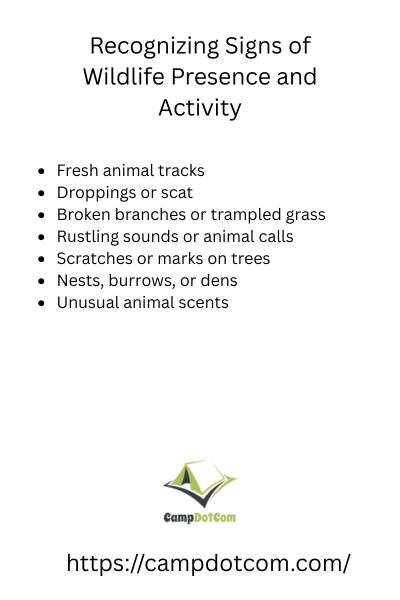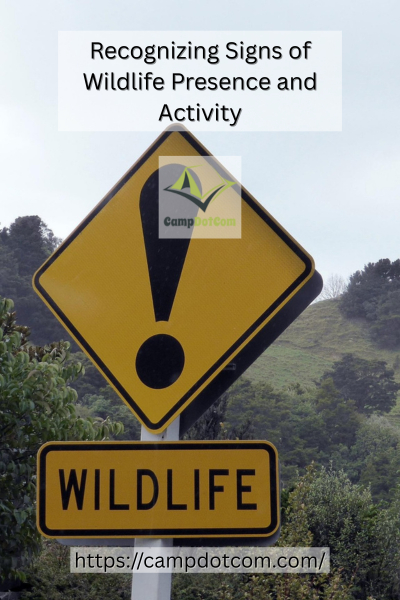Recognizing signs of wildlife presence and activity is not just for professional trackers or nature photographers. It is something anyone can learn. The fun part is once you know what to look for, you will start noticing clues everywhere, even in your own backyard.
Read More About Recognizing Signs of Wildlife Presence and Activity

Why Pay Attention to Wildlife Signs?
You might be wondering, “Why bother?” Well, knowing how to spot wildlife activity can help you avoid unwanted encounters, protect your property, and honestly, it is just plain fascinating. Wildlife leaves a trail of hints like footprints, chewed plants, and droppings that tell a story about who has been around and what they have been up to.
I first realized how much you can learn from subtle signs when I found strange little tracks along the muddy edge of my garden one morning. At first, I thought it was a stray cat. But after following the trail and doing some late-night Googling, I discovered it was actually a raccoon making nightly snack runs. That little mystery turned my daily walks around the yard into mini detective adventures.
As an Amazon Associate, I earn from qualifying purchases. Some of the links in this article are affiliate links. This means that, at zero cost to you, I will earn an affiliate commission if you click through the link and finalize a purchase.
More Things to Know About Recognizing Signs of Wildlife Presence and Activity

Footprints: Nature’s Autographs
One of the easiest ways to start recognizing signs of wildlife presence and activity is by looking at the ground. After rain or early in the morning, soft soil or mud becomes a perfect canvas for animal prints.
Deer prints look like neat, heart-shaped marks. Raccoons? They have five toes and almost human-like little hands—creepy but cute. If you see tiny clawed footprints leading to your trash bins, you can probably guess who’s been midnight snacking.
Here’s a tip: take a picture of any tracks you find and compare them later with a field guide or online resource. You’ll be surprised how quickly you can identify different species.
Scat: Not the Most Glamorous Clue
Let’s be honest, nobody gets excited about finding animal droppings. But when it comes to recognizing signs of wildlife presence and activity, scat is a goldmine of information.
Different animals leave different shapes, sizes, and even textures (yes, I went there). Fox droppings often contain fur or tiny bones, while rabbit pellets are small and round. If you’re not into getting too close, which is totally understandable, you can still observe from a distance to see where it is located and whether it is fresh.
Chewed Plants and Gnawed Trees
If your garden looks like a salad bar for uninvited guests, that’s another clear sign. Rabbits tend to leave clean, angled bites on stems, while deer tear plants more roughly. Squirrels often leave gnawed marks on tree bark or even wooden fences.
Last spring, I kept finding little cone-shaped piles of pine scales under one of my trees. At first, I thought it was just wind-blown debris. Then I caught a squirrel in the act, expertly dismantling pinecones for the seeds inside. Mystery solved.
Sounds and Smells
Not all wildlife signs are easy to see. Sometimes you’ll hear rustling in the bushes or high-pitched chirps in the evening. Owls hooting at night, frogs croaking after rain, or even the faint tapping of a woodpecker on a distant tree are all sounds that tell you wildlife is active nearby.
Smell can also be a surprising clue. Skunks have their very unmistakable scent. Foxes and coyotes sometimes leave a musky odor around their territory. It’s nature’s way of saying “keep out.”
Nests, Burrows, and Hideouts
Another part of recognizing signs of wildlife presence and activity is spotting where animals live or hide. Birds build nests in obvious places like tree branches, but some, like owls, might take over old squirrel nests. Rabbits dig small burrows in grassy areas, while foxes prefer larger dens often hidden at the base of trees or bushes.
One summer, I noticed a perfectly round hole in the far corner of my yard. I thought it was from a fallen branch. Weeks later, I saw a groundhog popping in and out as if it owned the place because, apparently, it did.
Why This Matters for You
Learning these skills is not just a cool hobby because it can help keep you and your property safe. If you know raccoons are visiting, you can secure your trash cans. Spotting deer signs early can help you protect your vegetable garden. And if you are hiking or camping, recognizing wildlife presence can help you avoid dangerous situations.
Plus, there is a real satisfaction in being able to read the natural world. You start to see your surroundings in a new way, like you have unlocked a hidden layer of life that has been happening right under your nose.
Discover the Hidden Signs of Wildlife Around You
Once you start looking for clues, you’ll realize that wildlife is all around you even if you never see the animals themselves. From footprints in the mud to the distant call of an owl, every sign shares a piece of the story.
Next time you step outside, slow down. Look at the ground. Listen to the air. Who has been here before you? You might just discover your own little mystery waiting to be solved.
